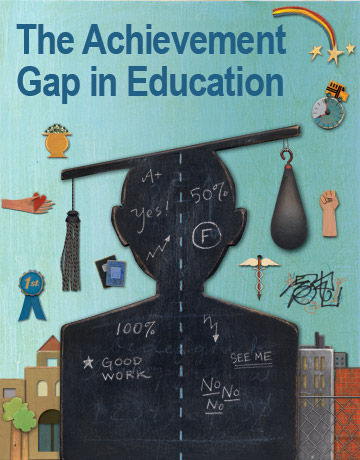Achievement gap refers to outputs, the unequal or inequitable distribution of educational results and benefits.
And opportunity gap refers to inputs, the unequal or inequitable distribution of resources and opportunities. Learning gap refers to relative performance of individual students, i.e., the disparity between what students have actually learned and what they were expected to learn at a particular age or grade level.
While particular achievement gaps may differ significantly in degree or severity from group to group or place to place, achievement gaps are defined by their consistency and persistence, i.e., achievement gaps are not typically isolated or passing events, but observable and predictable trends that remain relatively stable and enduring over time.
The most commonly discussed achievement gap in the United States is the persistent discrepancy in national standardized-test scores between white and Asian-American students, two groups that score higher on average, and African-American and Hispanic students, two groups that score lower on average. Another achievement gap that has received considerable attention in recent years is the lagging performance of American students on international tests in comparison to students from other developed countries. Although disparities in test scores tend to be the most discussed, scrutinized, and reported achievement gaps, educational performance and attainment differences may appear in a wide variety of data sets, including graduation rates, college-enrollment rates, college-completion rates, course grades, dropout rates, absenteeism rates, and disciplinary infractions, among many other possible categories of student-achievement data tracked by government agencies, districts, and schools.
Student Groups where Achievement Gap is Evident:
– White and minority students
– Male and female students
– Students from higher-income and lower-income households and communities
– Native English-speaking students and students who are learning English or who cannot speak English, including recently arrived immigrant or refugee students
– Non-disabled students and students with physical or learning disabilities
– Students whose parents have earned a college degree and students whose parents have not earned a college degree (these students are often called first-generation if they decide to enroll in college)
– American students and students from other countries

